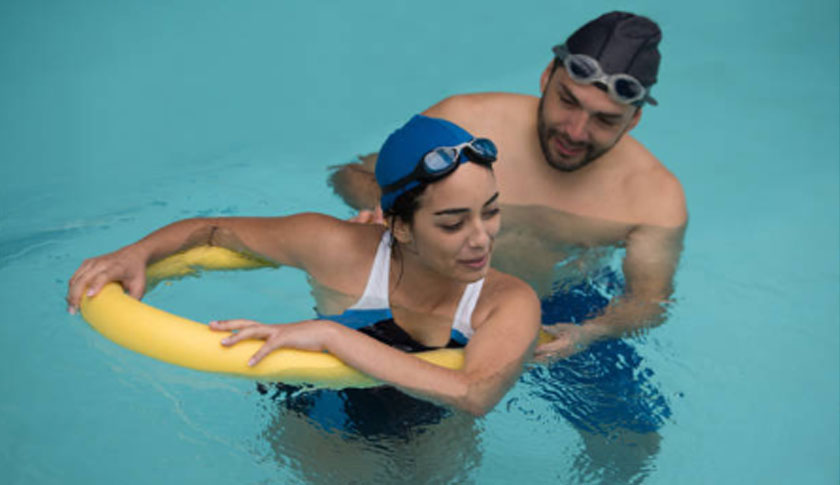Aquatic therapy provides a low-impact and safe environment for patients who cannot perform regular land-based exercises.
Below are some of the known water therapy exercises offered by various practitioners:
- Ai Chi. Created by Jun Konno in 1993, Ai Chi is a combination of Qigong and Tai chi chuan to strengthen and relax the body. In Ai Chi, active progressive resistance and diaphragmatic breathing are combined with spiritual, mental, and physical energy. Western and Eastern beliefs as incorporated into the practice. Here, the clients are submerged, standing in water at shoulder level. They master deep breathing exercises first. Then, they move on to the gentle movements of the extremities. The practitioner concentrates on the client’s proper breathing and body alignment to induce meditation and calmness.
- Bad Ragaz Ring. This aqua therapy was developed by a group of physiotherapists from Bad Ragaz in Switzerland. Their goal was to come up with a water-based resistive exercise that could mobilize and strengthen. They combined the research of Herman Kabat and his assistants Dorothy Voss and Margarett Knott, with the different elements of water exercises developed by Knupfer in the 1930s. The word “ring” in the name refers to the flotation devices that support the patients as they move across the surface of the water. The patient lies supine in shoulder- or waist-deep water.
- Watsu. This water exercise was developed by Harold Dull at Harbin Hot Springs back in the early 80s. In this therapy, the therapist helps the client through stretches and flowing movements designed to promote therapeutic benefits and intense relaxation. The steps combine dance, joint mobilization, shiatsu, muscle stretching, and massage.
Aquatic therapy in your very own pool is one of the quickest ways to recover and improve your quality of life. The pool installation experts at MFP Easy will help you transform your regular pool into a fiberglass water therapy pool, based on your preferences.
Those who practice aquatic therapy should be highly trained in administering oxygen, first aid, automated external defibrillation, CPR, risk awareness, and blood-borne pathogens. Though this type of therapy is done in a pool, there are some situations in which water therapy should not be performed:
- Incontinence
- Elevated body temperature
- Open wounds not dressed with bio-occlusive dressing
- Respiratory problems
- Uncontrolled seizures
- Hepatitis A patients
- Bromine or chlorine allergy
- Taking cognition altering medication
- Pregnant with complications
